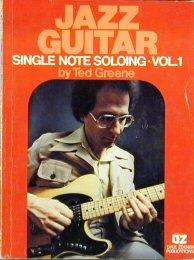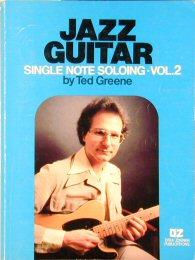 There's always an argument in methods of jazz improvisation over how much of a role learning, using and thinking in terms of the modes of the major and minor scales should play in figuring out how to hit the right notes when soloing over jazz chord changes.
There's always an argument in methods of jazz improvisation over how much of a role learning, using and thinking in terms of the modes of the major and minor scales should play in figuring out how to hit the right notes when soloing over jazz chord changes.The whole thing is very Zen: You're supposed to do all this theoretical work on scales and modes, master it and then "not think about it" while you're playing and let the music spontaneously flow.
Some people think it's about learning a language: When you speak English (if it's your first language), you don't think about grammar when you converse, and there aren't even that many pauses between words. You just convey your thoughts in a continuous stream of sound. And that's the same principle in jazz improvisation. You've gotta learn the language of jazz. And just as phonics competes with "whole language" in the teaching of reading, there are a ton of ways to skin the cat in jazz music.
Anyhow, back to Ted Greene's "Jazz Guitar: Single Note Soloing." Ted's focus is on arpeggios, scales and written-out examples, or licks, using that primary material. For him, playing over standard changes is all about chord tones, hence the primary importance of arpeggios (chords broken up into their single notes).
To make your music "sound like jazz," and to learn the musical language, there are several theoretical constructs that will help you wrap your brain (and fingers) around it, and while Ted mentions modes at various points, as well as situations where you could theoretically be using modal thinking to play over diatonic (major and minor) harmony, he doesn't recommend it. Even if you are playing the same notes over two different chords, it's best to think of the harmony you are in, as opposed to some modal construct that requires too much mental work and provides no clue as to which notes are more important than others.
I was looking at Vol. 1 of Ted's book, and as far as scales go, he wants you to directly think of a scale or two that directly relates to the chord you will be playing it over (here related to the major scales for purposes of figuring out the notes):
Major 7th chords
Major (as in C D E F G A B C) scale
Lydian (major with #4) scale
Minor 7th chords
Minor 7th scale (major with b3 and b7)
Dominant 7th chords
Dominant 7th scale (major with b7)
Overtone dominant (major with #4 and b7, also known as lydian dominant)
Two flavors of "altered dominant," which I don't quite have MY head wrapped around.
Along with the many, many arpeggio grids, these scales, with the accompanying "jazzy" examples, will get you playing over just about all the chords you will encounter in jazz. Not that I'm anywhere near being able to do this, at least (in my own mind) I understand what's required.

Also introduced in Vol. 2, along with how to play over fast changes, plus work on the harmony in standard tunes, are many more scales (including diminished, whole tone and harmonic and melodic minor) and arpeggios. It's very interesting to see the order in which Ted introduces each piece of the jazz puzzle and compare it with the rest of the improvisation method books I have on my shelf.
Somewhere in the two "Single Note Soloing" books, Ted writes about converting the material for other instruments, something I wish he had done in his lifetime, because his way of thinking about music transcends the guitar itself in deep and profound ways.
No comments:
Post a Comment